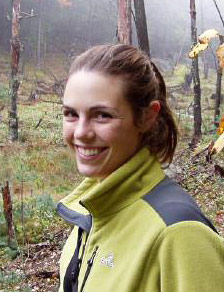New Tools for Identifying and Prioritizing Range-Shifting Invasive Plants
Recorded November 5, 2019
Download presentation slides (PDF, 2.2 MB)
Description
Join Jenica Allen and Bethany Bradley to learn about new tools for identifying and prioritizing range-shifting invasive plants coming soon to a landscape near you. Whether you’re a property owner, land manager, landscape professional, or policymaker, these tools are for you. Drs. Allen and Bradley will provide a live demonstration of the tools and answer your questions about how climate change could influence invasive plants.
Questions and Answers
- It’s hard to know if raintree observations are street trees or actual naturalized trees. (S. Y.)
A: Agreed — that is an unknown with EDDMapS data because they come from a variety of users. That would add some uncertainty to the spatial models. But, it looks like even if they are street trees that they can withstand a pretty broad range of climate conditions.
- Would you assume that the plants would be as invasive as they moved north? (S. Y.)
A: Good question — that would be my starting assumption, but I’d also want to consider whether the affected ecosystem is the same in its current vs. projected future range.
- So, how is habitat suitability calculated? Is it based on actual occurrence data? As we get more occurrence data points, could the habitat suitability of individual species expand or contract? (K. M.)
A: Yes, it is based on occurrence data that we had available from EDDMapS and from regional herbaria (circa 2016). As we get more data, the models also improve. For species that already have a lot of data, the models probably won’t change much. But, if the species only had a handful of points to begin with (e.g., 50–100 occurrences) then the models could change with more data.
- This is just climate data but to really know the modeled range you would have to include other factors like geology, soils, etc. Don’t the climate maps give you a false impression on where they would really occur? (S. Y.)
A: These models tell you that the climate is suitable for the given invasive species within the target county/state. They don’t include landscape or local scale factors. So, we should consider it as one factor (but a big one) in assessing risk.
- Would you suggest states ban invasive horticultural plants from sale that are predicted to come north, as a preventative measure? (S. Y.)
A: Yes, absolutely — I want one of us to answer that question live, so I’m leaving it open for now!
- How do you get to the Range Shift Listing tool from the main EDDMapS website? (S. L.)
A: https://www.eddmaps.org/rangeshiftlisting/
- It would be also great to know which exotic plants that are already in a state would come out of their lag phase and become invasive because of climate change. (S. Y.)
A: Agreed! We’re dealing with that with kudzu right now — it’s already in New York and Massachusetts, but is definitely an emerging problem. We’ve been looking to watch lists from states a little further north to expand the species we’re considering for impacts assessment
- Seems like you would also want to include iMap data to model. Also iNaturalist has lots of information now. (S. Y.)
A: Agreed — I think we included some in the original models, but there are a lot more data available now.
- Ludwigia grandiflora specimens turned out to be L. hexapetala, so we don’t have grandiflora in New York. See New York Flora Atlas. (S. Y.)
- That was an AWESOME presentation. I’m so impressed with this newly available information! (E. C.)

Jenica Allen, Campus Living Laboratory Manager, Mount Holyoke College

Bethany Bradley, Associate Professor, University of Massachusetts Amherst
Presenters
Dr. Jenica Allen is the Campus Living Laboratory Manager at Mount Holyoke College. Her quantitative ecology work is focused on forecasting the effects of global change on ecological systems. Recent research investigated how climate and land use change affect the geographic distributions of invasive plants, both in the Northeastern U.S. and nationally. She uses a translational ecology model, where stakeholders inform research needs and research findings are translated to stakeholder-relevant tools, through the Northeast Regional Invasive Species & Climate Change (RISCC) Management network.
Dr. Bethany Bradley is an Associate Professor of Biogeography and Invasion Ecology in the Department of Environmental Conservation at the University of Massachusetts Amherst. She is interested in how the geographical locations of species across landscapes and regions can inform ecological understanding of species distributions, invasion risk assessments, and conservation planning. Her research has a strong focus on terrestrial plant invasions, with a goal of understanding how invasion risk varies spatially in the context of anthropogenic disturbance and climate change. Dr. Bradley also leads the Northeast Regional Invasive Species & Climate Change (RISCC) Management network, which addresses the question of how we can better manage for upcoming biological invasions in light of climate change.
